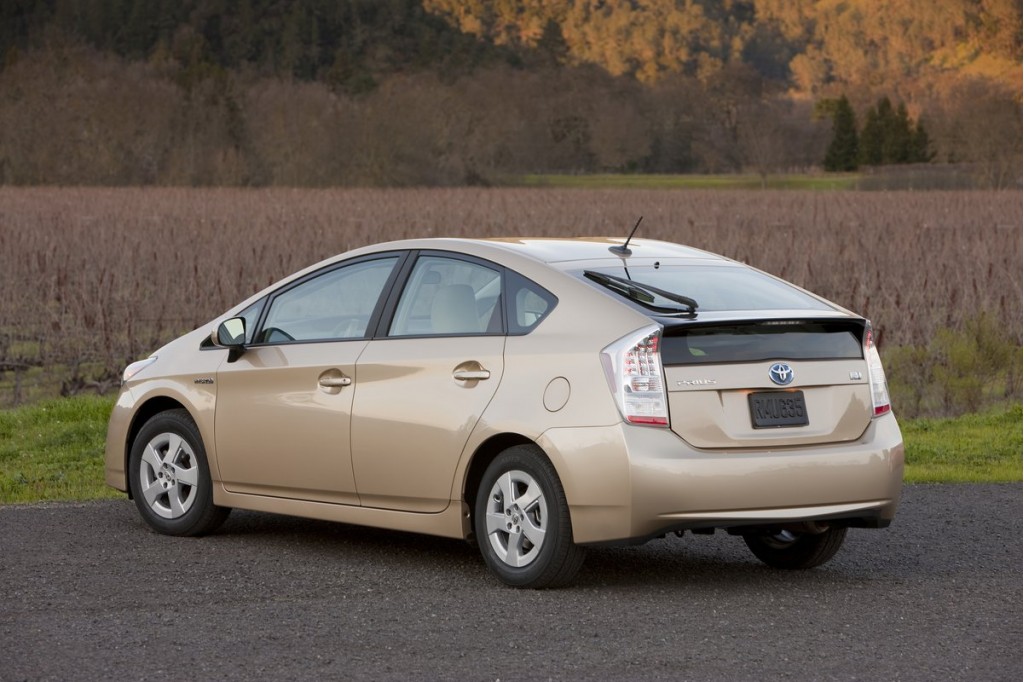Cutting carbon emissions is complex. And there are a lot of myths and misinformation out there.
The effective impact of some actions--reusing your grocery bags, for instance--is relatively low. Other methods, things that many people never even consider, are considerably more effective.
For instance, did you know that over its lifetime, a medium-sized dog has the carbon footprint of driving 10,000 miles in a large sport utility vehicle with low fuel efficiency (say, 14 mpg)?
That's the conclusion of a new book, Time to Eat the Dog? The Real Guide to Sustainable Living, whose authors have measured the environmental impact of many parts of our modern lifestyles (using something called the Ecological Footprint assessment).
Owning dogs has a substantial carbon footprint, says author Robert Vale, "because they are large carnivores, so it takes a lot of land to provide their foods." Indeed, animal husbandry to provide meat is a hugely carbon-intensive business in general.

2011 Toyota Prius
What can you do to cut your own carbon footprint?
Adopt or rescue an existing dog or cat, rather than breeding your own or suggesting to friends that you'd love to have a kitten or puppy from their pet's next litter.
Spay or neuter your pets, and encourage all your pet-owning friends and coworkers to do the same. And feed your pets as many locally grown vegetables as you are comfortable with.
Then go out and replace your existing vehicle with that 50-mpg 2011 Toyota Prius hybrid, the most fuel-efficient new car on the market today.
Ah, you say, but won't I add a huge amount of carbon to the atmosphere from the manufacturing of that new car?
Well, actually, no. As we explain in the High Gear Media green rating, a study from the Massachusetts Institute of Technology calculates that fully 75 percent of a vehicle’s lifetime carbon emissions come from the fuel it burns over its lifetime, with another 19 percent coming from the production of that fuel.
Extraction of the raw materials that make up the vehicle adds another 4 percent, and only 2 percent of its lifetime carbon is due to the manufacturing and assembly process.
So, replacing your current 25-mpg vehicle with one that gets 50 mpg almost cuts your the carbon footprint of your transportation in half. Not quite, because of that 6 percent for materials and assembly, but overall, you're still far better off.

What's a Few Hundred Condoms Between Friends? by Flickr user xmasons
In a similar vein, and perhaps even more impactful, would be making effective family planning services and products--yes, condoms, among other methods--widely available to everyone in the world who wants them.
A report two years ago from the London School of Economics suggests that family planning should be viewed as a primary method of curbing greenhouse-gas emissions.
Contraception can eliminate 1 ton of atmospheric carbon for $6.70, the report says, against conventional technologies (like more fuel-efficient cars) that cost up to $31.70 per ton.
Fewer cats and dogs + fewer unwanted babies = less atmospheric carbon.
[CNN; lead photo: Jay Blotcher]
NOTE: The dog in the lead photo, Scout, was adopted from Rondout Valley Animals for Adoption in Accord, New York. The group spays dogs and trains them while they are waiting for adoption; it can be reached at 845 687-7619.
+++++++++++













